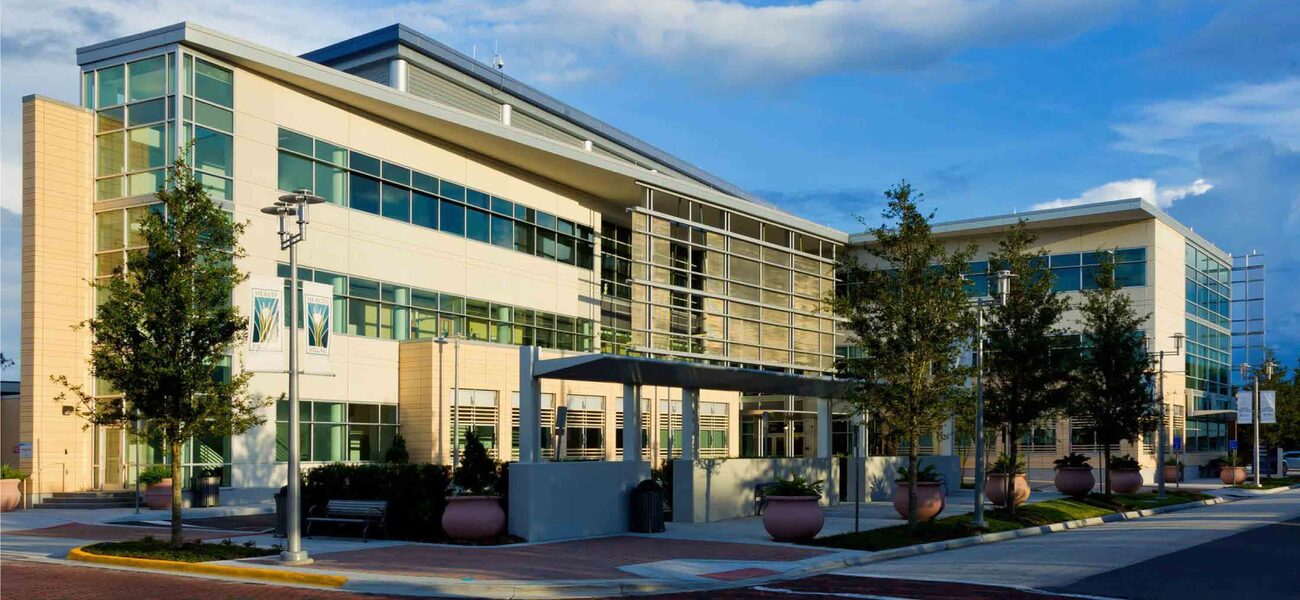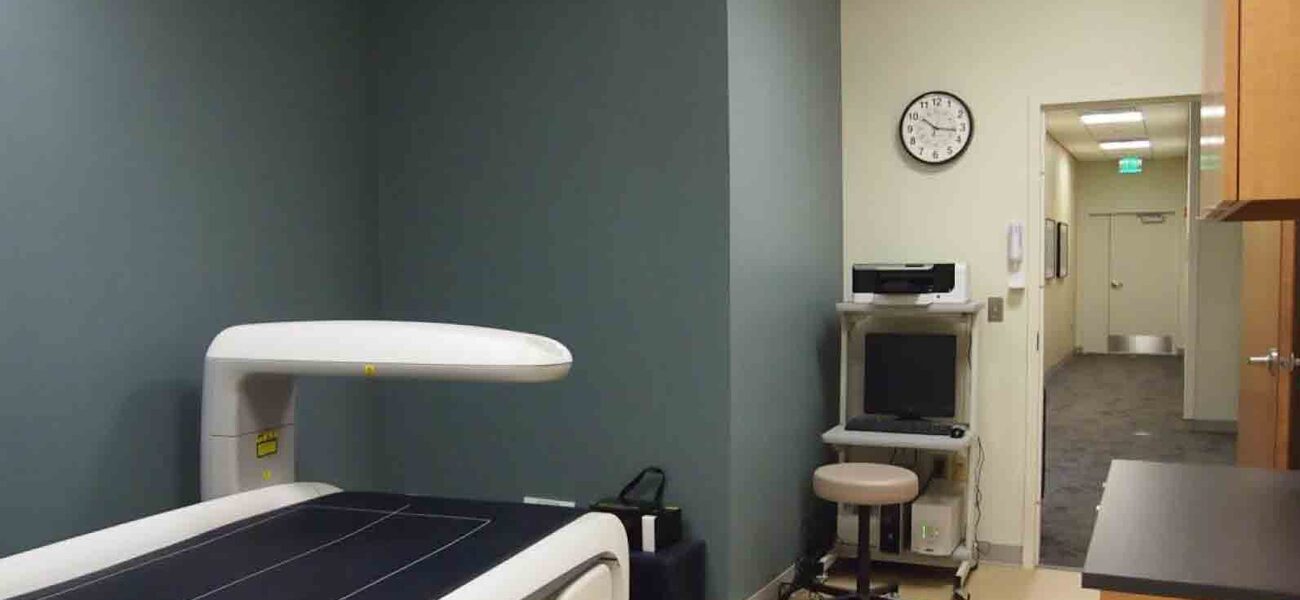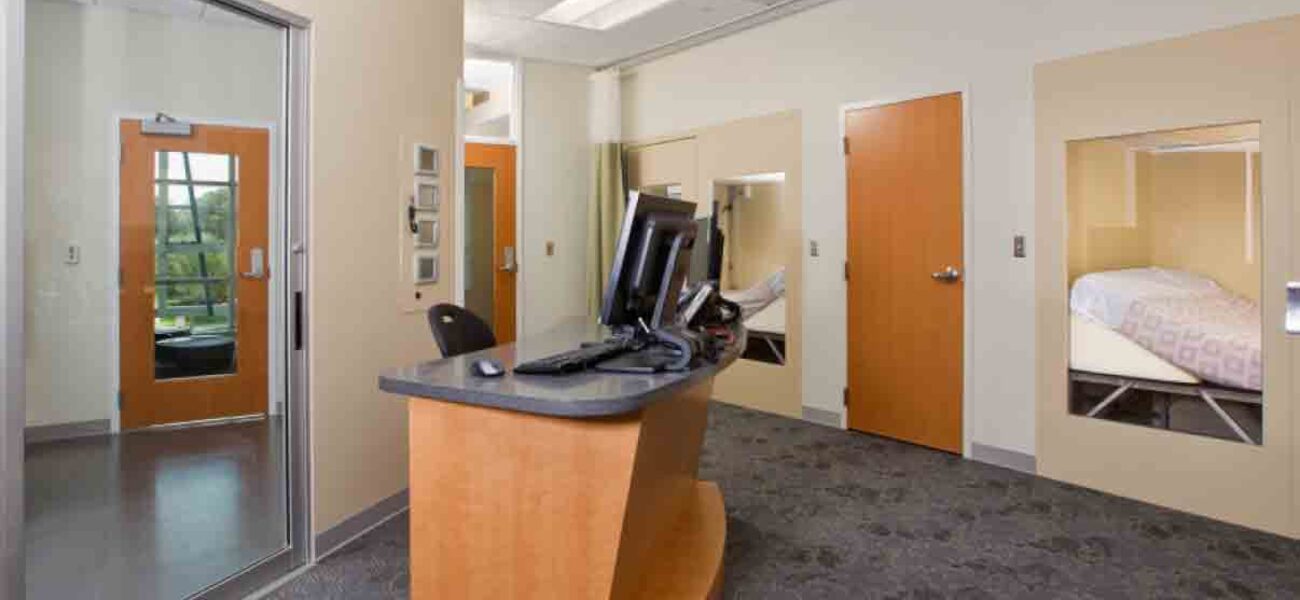The Translational Research Institute for Metabolism and Diabetes (TRI) is a unique stand-alone hospital-like facility that offers rare proof that facility design can accelerate the time it takes to go from new lab discovery to patient treatment. Utilizing a core-based model that includes imaging, pharmacy, kitchen, and lab cores in one location, the facility focuses on fast-tracking functional treatments for diabetes and obesity. Owned and operated by Florida Hospital in collaboration with Sanford-Burnham Medical Research Institute, the integrated translational research facility will dramatically shorten how long it takes to go from bench discovery to human trials—in some cases reducing the average time by eight years—down to less than 18 months.
One example of the TRI’s accelerated “bench to bedside” approach began with a discovery made in the laboratories of Sanford-Burnham Medical Research Institute.
“In 2011, one of our scientists at Sanford-Burnham discovered that there is an appetite-inducing hormone produced in the brain called orexin,” says Robert Deininger, administrative director of the TRI. “It makes fat mice go skinny by activating calorie-burning brown fat, which is considered the ‘good fat.’”
“So we worked with Sanford-Burnham to advance that discovery at the TRI with human testing in order to take the next steps to get it through the regulatory process,” says Deininger. “That discovery went from publication to human related testing in less than three years, which is about seven years faster than we would have probably seen in a traditional environment. But that is what can be done when you have basic science connected to translational science connected to a healthcare system.”
"The idea was to bring new discoveries and therapies to the market more quickly,” says team leader Laura Stillman, a principle with Flad Architects. “Diabetes and metabolic disease were targeted as a good focus point given the current demographic and healthcare statistics.”
The TRI features a flexible, open floor plan that supports the evolving needs of researchers and clinical staff, and provides for the needs of patient volunteers who are part of the studies.
“We don’t have patients,” says Deininger. “We refer to them as participants or volunteers. Our physician scientists have a lot of respect for what they bring to the equation, so the facility is really designed to accommodate their needs.”
Opened in March 2012, the TRI includes clinical offices, an advanced imaging suite, research-computing areas, and a biorepository for sample collection and storage. One of the facility’s most unusual features is a metabolic core with cutting-edge calorimeter chambers—dorm-style rooms that allow TRI staff to precisely measure the carbohydrate oxidation and energy expenditure of inhabitants as they go about their daily routine.
Cores of Collaboration
A key component of the TRI’s operating model is its focus on collaboration with private companies, research universities, and the NIH.
“There are essentially two halves in our operation—the NIH half and the industry half,” says Deininger. “Together they drive collaborative science. The NIH brings scientific innovation and thought leaders with a willingness to ask risky or crazy questions. The industry brings the rigor required for successful study execution and quality data. The idea is that if we can work more collaboratively with academic scientists and accept a little risk, we will get better results faster.”
This model flips the traditional industry approach where pharmaceutical companies turn to research institutes primarily as partners who merely receive protocols and execute studies.
“With the TRI, a pharmaceutical company may have a problem or question about the way a drug is behaving,” says Deininger. “They can come to us with those questions, and our scientists will sit down to design a study that helps answer them. It’s a more collaborative approach that positions us at the table during the design process. Now, instead of getting a protocol that may have problems, we can help inform those studies from the beginning, which is more fiscally responsible for both parties.”
The TRI has the ability to take discoveries directly from the lab into phase one human trials and all the way through phases two and three. Then researchers can continue working with Florida Hospital to do phase four studies on clinical application.
Research participants are enrolled in the same web-based Cerner® electronic medical record system used by Florida Hospital. This allows the TRI and other Florida Hospital research institutes to conduct collaborative research protocols within the system.
“In most cases, our clinicians in the TRI can view the entire medical record of a volunteer who comes in and enrolls in a research trial without having to go get that information from another doctor’s office,” says Deininger. “That is a major benefit from Florida Hospital having a 52 percent market share in this area. It really helps drive research collaboration across the entire community.”
The TRI has a state-of-the-art informatics database to collect and analyze the massive amounts of research data. This database helps scientists correlate patient information with data collected through laboratory research in Sanford-Burnham’s metabolomics laboratory.
One Facility, Three Goals
Design of the TRI followed three guiding principles: connectivity, convertibility, and comfort.
“Connectivity and convertibility are not unusual goals for a lab, but comfort is,” says Deininger. “We wanted to make sure the facility accommodated the needs of volunteers. Some of these people are in this facility for in excess of 40 days. As a result, almost every space in the building has daylight and exterior views.”
The 54,000-sf building features three levels, with clinical operations on the ground floor, testing facilities on the second floor, and an advanced exercise lab on the third floor.
“The ground level houses testing clinics and spaces where there’s a lot of public interaction,” says Stillman. “The second floor holds the clinical resource unit. It has overnight rooms for participant volunteers, the food-testing kitchen, and all the support. The third floor will be used for research.”
While there is a “boutique lab” onsite for specialized applications, researchers at the facility turn to Florida Hospital to run most of their common clinical tests. The partnership with Sanford-Burnham also allows researchers to tap into advanced testing capabilities, including genomics, metabolomics, and high-throughput screening.
“The idea is that faculty members can come in and have the toolkit they need to do all of their work in thematically focused areas,” says Deininger. “It’s a shared, core-based environment that improves efficiency and provides the needed expertise. They don’t need to hire their own physicist to do MRS or MRI. They have a core here that is dedicated to providing it.”
Florida Hospital also wanted to make sure the building could be adapted to different needs moving forward.
“We created several floor plans to prove that the building could function in multiple ways over the long run,” says Deininger. “That included everything from an incubator lab, to administrative areas, to outpatient clinical services.”
“The physical challenge of trying to be all things to all people can add up to a very expensive building,” says Deininger. “We had a strict budget to work within, so we started out looking at the most technically challenging components first—like the calorimetry rooms and the imaging—and then took it down to the offices. We found that an 11-by-33 module worked well across all of those spectrums, allowing us to break it into thirds for an 11-by-11 module.”
Lessons Learned
Deininger emphasizes that other organizations considering a similar approach must be committed financially and scientifically to succeed.
“It takes a huge investment to do work like this, in both cash and potential risk,” he says.
The associated expense means that conducting a high volume of research is essential to making it pencil out financially.
“The nature of research is that some projects don’t always come to fruition even after you’ve invested considerable time and effort in them,” says Deininger. “And the equipment needed to run a facility like this is not cheap. The equipment for the TRI accounted for more than 30 percent of the initial build costs.”
It takes even more cash to develop initial competencies, prove success, and develop a publishable track record that attracts sponsors and additional investments.
“As a result, we worked from the most technically challenging spaces down to the most flexible so that we knew we were putting our money in the right areas,” says Deininger.
“The unique thing about the TRI is that it wasn’t about the project setting the mission,” says Stillman. “In this case, the mission set the project.”
By Johnathon Allen
This report is based on a presentation by Laura Stillman and Robert Deininger at Tradeline’s Academic Medical and Health Science Centers 2013 conference.


